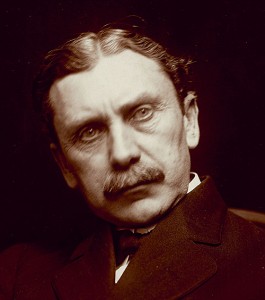This summer I am remotely assisting Professor Reckson with a book she is writing about ecstatic experience and performance in American literary realism. In the fall she will be doing research at the Library of Congress in D.C., and until then I’m helping her come up with resources and materials, primary and secondary, that might assist her research and writing about the Ghost Dance, a Native American spiritual practice and performance, most famously documented by American ethnographer, James Mooney, in his 1896 monograph, The Ghost-Dance Religion and the Sioux Outbreak of 1890.
In a sense, I’ve become more familiar with the Ghost Dance these past few weeks. I’ve culled all kinds of texts about the Ghost Dance from the NYPL; I’ve searched Haverford’s Tripod entering things like– ‘ghost dance technology’, ‘ghost dance realist ideology’, ‘ghost dance representation’ – and have yielding some fascinating articles by contemporary scholars discussing the logics and limits of late nineteenth century technologies and ethnographic methodologies deployed in the documentation of this circa 1900 Native American practice; I’ve listened to Mooney’s 1894 recordings of Ghost Dance songs; so yes, I’ve familiarized myself with the material. And yet, despite my efforts to know a little more, I have a gaining awareness of what I can’t know and of what can’t be known. This waning sense of familiarity with academic insights and cultural artifacts is coupled by a gaining sense of wonder at that which teases at the boundaries, at that which exceeds discursive conceptualization. I find these seemingly contradictory senses native to the topic.
While my research began broadly, more recently, I’ve been culling sources that engage more specifically the ways religious ecstatic experiences intersect with realist representation strategies. Notably for Lindsay this street goes both ways. On the one hand, I’m becoming more familiar with the way late nineteenth century realist representation strategies understood, and perhaps, misunderstood Native American practices. Moreover, I’m learning more about how ‘the real’ is an interpretation of reality, is a claim about a contested reality that often, if done well, veils and mutes that contestation. On the other hand, I’m learning about how Native Americans pushed and push back against the seeming determinism and authority of Western representation strategies both photographic and literary. How authors like Gerald Vizenor push back – how his work, Dead Voices, could be thought of as, in the words of scholar Arnold Krupat, “blurring, far more than is inevitable, the generic line between the autobiography or personal essay and the novel, a line drawn on the Western epistemological distinction between “truth” and “fiction””.
I’m looking forward to reading more literary reenactments of the Ghost Dance, thinking more about how texts describing the Ghost Dance can be considered reenactments of the Ghost Dance itself, and I’m especially looking forward to thinking more about this critical intersection, this two way representational street of dynamic agency as a site where narratives of ‘reality’ contest boundaries and garner sympathies in ways both confounding and inciting.

